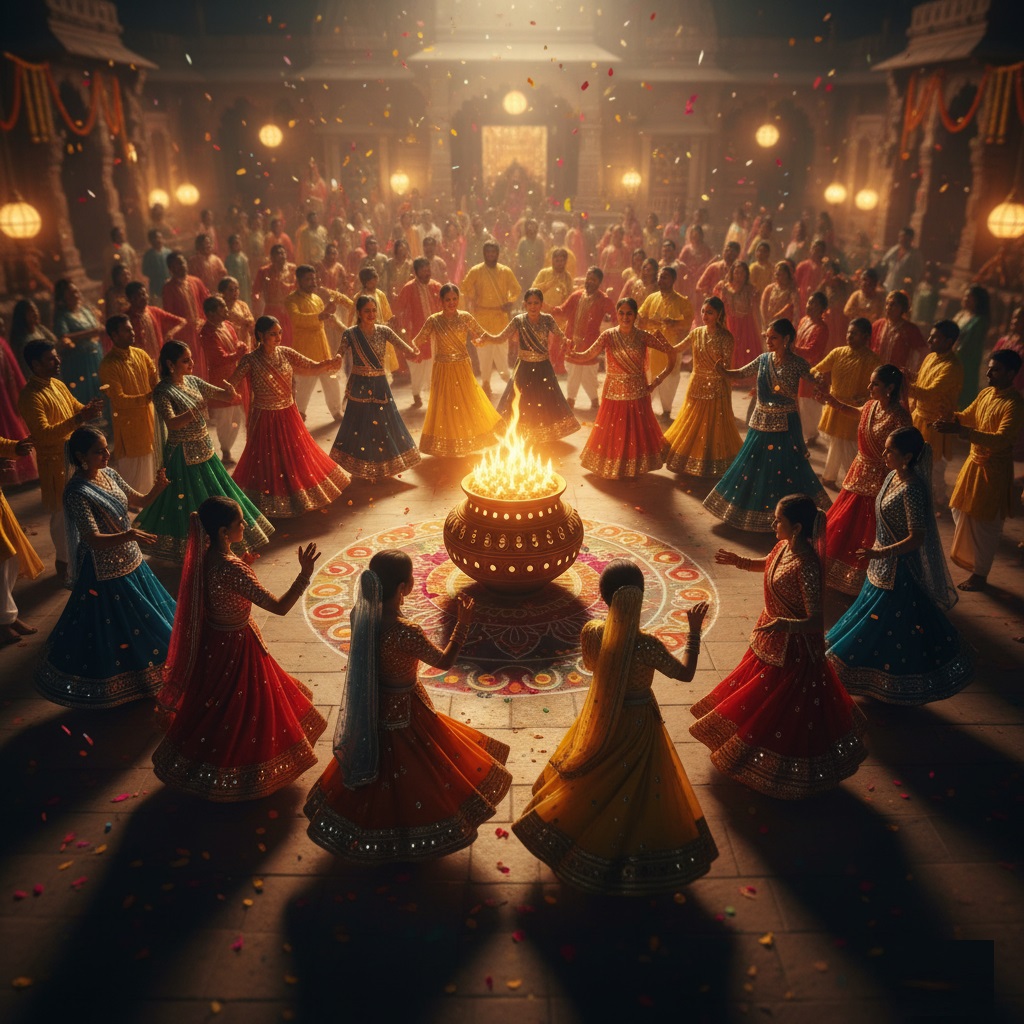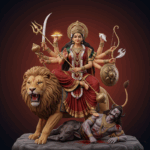Garba, one of Gujarat’s most vibrant folk traditions, is today celebrated worldwide as the heartbeat of Navratri. With its colorful costumes, rhythmic claps, and circles of dancers, Garba is much more than just a cultural performance – it is also seen as a form of spiritual expression, devotion, and connection with the Goddess.
The Meaning of Garba
The word Garba comes from the Sanskrit word Garbha, which means womb. Traditionally, Garba is performed around a clay pot or a lamp placed at the center. This pot, called garbha deep, is seen as a symbol of life and creation, while the lamp inside represents the divine light.
As dancers move in circles around this central lamp, the act symbolizes that life constantly revolves around the divine energy at the center of existence.
The Circle of Life
Garba is always performed in a circular formation. This is no coincidence – the circle is seen as a symbol of time and the eternal cycle of life: birth, death, and rebirth. While the lamp at the center remains still, the dancers around it are in constant motion, showing how the divine stays eternal even as human life changes and moves forward.
Legends and Deeper Symbolism
Garba is most commonly seen as a joyful folk dance of devotion. But as per some legends, Garba carries an even deeper spiritual meaning:
- The dance is compared to a cosmic mandala, where the outer circle of dancers represents the universe and the central lamp symbolizes the source of energy.
- Some traditions view Garba as a living yantra (a mystical diagram in Tantra), where movement and rhythm activate divine energy.
- According to certain interpretations, the rhythm of Garba reflects the balance of Shiva and Shakti – Shiva as stillness, Shakti as motion. Dancing in harmony is said to dissolve duality and unite with the cosmic oneness.
- Folklore also suggests that every step in Garba is a symbolic journey inward – from the outer distractions of life toward the inner truth, represented by the light at the center.
While these esoteric meanings are not part of everyday practice everywhere, they show how deeply people have tried to understand the dance as a form of spiritual discipline.
Garba and Navratri
Garba is most famously performed during Navratri, the nine nights dedicated to Goddess Durga in her different forms. Each night, devotees wear a specific color, sing devotional songs, and dance in circles as an offering of energy and joy to the Goddess. The celebration is both devotional and festive – bringing together communities in a spirit of unity.
More Than a Dance
To an outsider, Garba may look like a lively folk performance, but to those who participate, it is an act of worship, surrender, and connection. The body becomes the temple, the dance becomes the ritual, and the lamp at the center becomes the living Goddess.
As many legends remind us, Garba is a way of saying: “From Her we are born, in Her we live, and to Her we return.”

